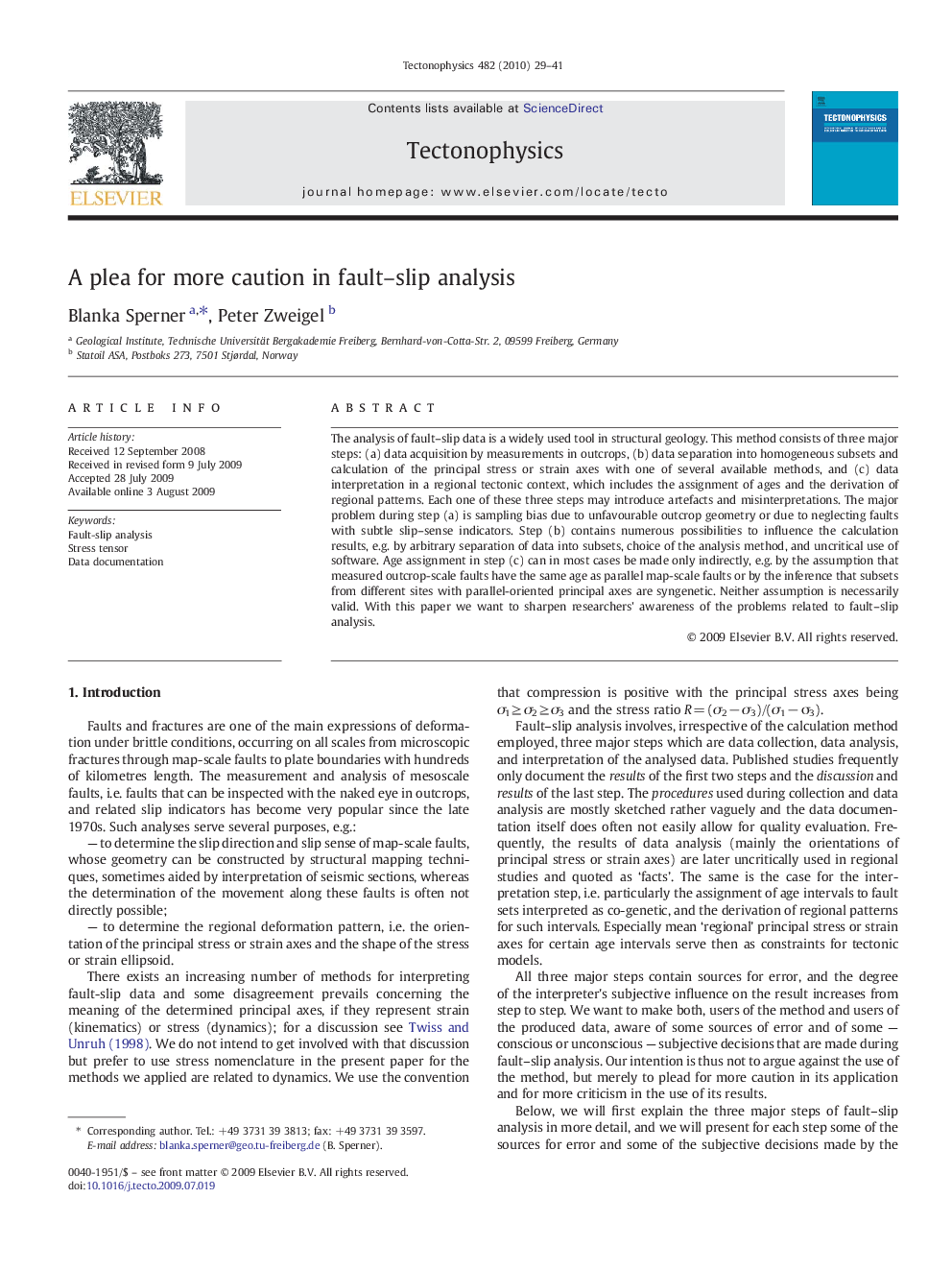| Article ID | Journal | Published Year | Pages | File Type |
|---|---|---|---|---|
| 4693595 | Tectonophysics | 2010 | 13 Pages |
The analysis of fault–slip data is a widely used tool in structural geology. This method consists of three major steps: (a) data acquisition by measurements in outcrops, (b) data separation into homogeneous subsets and calculation of the principal stress or strain axes with one of several available methods, and (c) data interpretation in a regional tectonic context, which includes the assignment of ages and the derivation of regional patterns. Each one of these three steps may introduce artefacts and misinterpretations. The major problem during step (a) is sampling bias due to unfavourable outcrop geometry or due to neglecting faults with subtle slip–sense indicators. Step (b) contains numerous possibilities to influence the calculation results, e.g. by arbitrary separation of data into subsets, choice of the analysis method, and uncritical use of software. Age assignment in step (c) can in most cases be made only indirectly, e.g. by the assumption that measured outcrop-scale faults have the same age as parallel map-scale faults or by the inference that subsets from different sites with parallel-oriented principal axes are syngenetic. Neither assumption is necessarily valid. With this paper we want to sharpen researchers' awareness of the problems related to fault–slip analysis.
